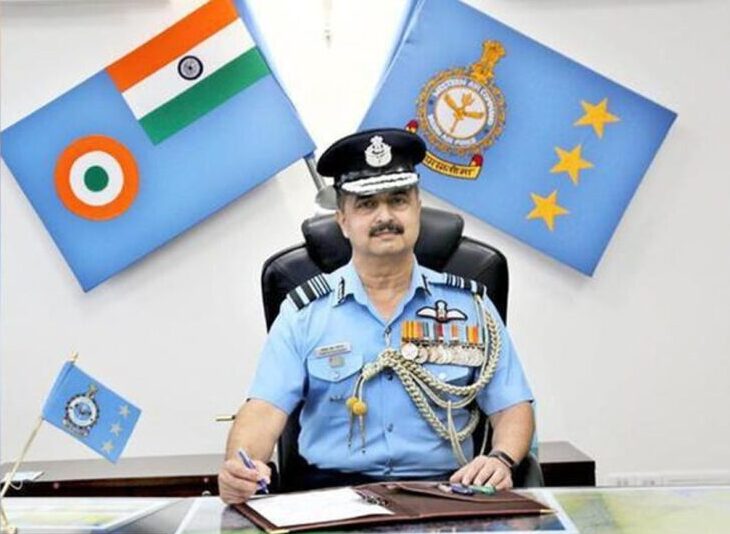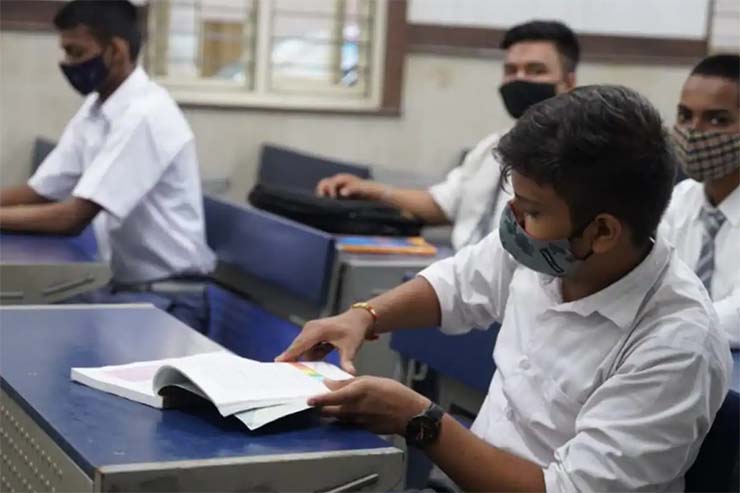
In the previous year, Air Marshal Vivek Ram Chaudhari stated that the lack of framework required for cooperation between civilian and military entities is restricting the country from innovating and producing the next generation of Space Technology on a higher scale.
The Vice Chief of the Indian Air Force said that “In our context, the Indian space ecosystem — at present being largely civilian in nature — works around the Space Commission and its constituent Department of Space.”
The United States State Department mentioned that a military-civil fusion is an aggressive national strategy that is being used by the Chinese Communist Party (CCM) with an intention to allow Beijing for developing the most technologically advanced military across the globe.
The elimination of any barriers that stand between Beijing’s military and defence industrial sectors, and civilian research and commercial sectors, act as a key part of the military-civil fusion, the United States State Department further stated.
Beijing’s MCF Strategy and Space Integration
Over the past few years, fears have centred on a Chinese strategy which is termed as the Military-Civil Fusion (MCF) that is aimed towards spurring dual-use technologies for the military end-uses, and innovation in the key sectors. Beijing, which has practiced the civil-military integration (CMI) since a long time, now witnesses the MCF as the master strategy which requires it to be amalgamated along with the other national strategic plans for economic transformation and development.
Basically, there are two aspects to the military-civil fusion developments. First is the development of the much believed new and disruptive Technology which could possibly range from 6th generation fighter jets, communication systems, Quantum radar, hypersonic weapons and unmanned equipment platforms, ground, ships, aircraft’s systems, driven by Artificial Intelligence (AI). The second aspect is with regards to improvement of the existing platforms through a new generation of weapons and sensors, high-energy systems like rail-guns and lasers that can potentially provide China with a military edge.
Beijing has never hesitated in demonstrating how technology that has originally developed for civilian use is improving the country’s military potentials. For example, back in December 2017, a display of swarming through the performance of 1,108 quadcopters at an air show was conducted by the country while in the very next year a similar swarm of 56 unmanned boats was demonstrated by Beijing. More recently in January of the previous year, the nation had advertised exoskeleton suits for being used in the Himalaya border with India. Apart from this, other military technologies including Electromagnetic Aircraft Launch System (EMALS), laser weapons, hypersonic vehicles, high-power microwaves and stealth ships were also revealed by them.
The new and emerging technologies can either be driven by doctrinal imperative or be the outcome of scientific-technical evolution. Evidently, it is the latter in the case with Beijing with the compulsion to consistently enhance the country’s defence capabilities. The incorporation of elements and components of new technology like sensors, C4SIR (Command, Control, Communications, Computers, Intelligence, Surveillance and Reconnaissance) systems, delivery systems and space systems, the existing weapon platforms and systems have witnessed an extensive evolutionary upgradation.
However, in whatever form, Beijing’s intentions of overcoming deficits in the crucial areas related to the Nation’s Security have had its presence for long. Earlier, China came up with a program of 1956-57 called as “two bombs and one satellite” that referred to the development of the hydrogen and atomic bomb along with a space satellite while eventually Beijing’s Project 921, Manned Space programme, was approved and similar programs aimed at developing and deploying strategic weapons and research the so-called “assassin’s mace” Technology which would be equipped with the potential of targeting an enemy’s vulnerabilities.
Where Does India Lack?
The earlier mentioned official had said that at the moment, India is not equipped with indigenous capabilities for tracking, identifying and observing non-cooperative objects in outer space. He said that “This not only restricts our defensive counter-space capabilities but also limit our anti-satellite capability in future”.
This is the reason why space situational awareness stands as a need of the hour for the country and the nation should have the capability to know hostile manoeuvres by adversaries’ space objects.
The official had also stated that the existing capabilities of the Defence Research and Development Organisation (DRDO) and the Indian Space Research Organisation (ISRO) would require to be well integrated into the air surveillance image of the Indian Air Force (IAF) while this particular integration shall prove to be a gradual progression towards a comprehensive space surveillance network.

In India’s regard, another major focus area should be supplementing the ground-based ballistic missile architecture through producing space-based ballistic missile defence capabilities and potentials. This should enable the early warning detection and destruction of the Intercontinental Ballistic Missiles (ICBMs) and also the location for the launch pads along with the prediction of impact points.
Chaudhari further stated that “Another changing paradigm in the space application is the growing ubiquity of low-earth orbit satellites or LEO satellites, particularly in domains which were historically done purely by geo-synchronous satellites”.
The communication satellites present in lower and medium Earth orbits possess their own advantages while traditional communication satellites with the geo-synchronous orbits have already proved their worthiness because of the wide-coverage area and longer service life
As compared to the existing geo-synchronous satellites, lower vulnerability and faster communication can mitigate the disadvantage of the requirement of a large number of satellites
With multiple commercial players entering a proliferated lower Earth orbit, even the defence forces of India are entering the segment. The technology will rapidly evolve with time thereby reducing the launching and manufacturing costs which would prove to be favourable for the shift towards this concept.
The Air Marshal said “I can see that in the near future, this would become the key area of cooperation between the military and the commercial entities.”
The India-China Saga
If Beijing is really developing a suitable capability for taking on the United States, then there are high possibilities that it will hugely enhance the Indian vulnerability. For instance, both the countries shall witness a growing asymmetry between its military capacity and which won’t be easily addressed provided the size of the economies that both the countries hold along with their level of industrialisation.
On the other hand, there are crucial differences between China and India. China has turned into a major centre of Technology due to its efforts and Technology acquisition strategy. This has already influenced the world in cutting-edge domains such as Quantum communications, 5G, and artificial intelligence. It has also created a huge Technology ecosystem of hi-tech zones, Universities, institutions, and industrial parks as a part of these efforts which are adding them to emerge as a technology power.
For India, it doesn’t stand without any experiences in the area of civil-military integration. One of the best examples of this would possibly be the manner in which New Delhi’s nuclear weapons programme was embedded in its nuclear power industry. The outer space model, SLV-3, that formed the core of a variety of satellites developed for civilian use and also the Agni missile programme stands as an even more successful model which has provided New Delhi with its military imaging and communications satellites.
Here, the advantage has been that both the space and nuclear programmes have been run by the government. Now the bigger challenge that stands is to find the synergy between the technology areas of the private sector and those of the military. In further practical terms, the civil-military fusion at the present stage is more about making use of the civilian assets like airfields, roads, satellites, and logistics systems for military use.
India has been working on the concept of making use of the civilian companies in order to repair weapons, vehicles and tanks in their base workshops, for some time now, but the project has met with little success. The Indian Air Force in the past year had adopted the idea of using highways as emergency air bases.
However, the reality stands as this that inputs are underway which could have implications for the military balance and yield significant results. Therefore at the least, countries like India and the United States ought to get equipped with a strategy of de-risking themselves from the possible eventuality of Beijing’s successes.
Perspectives from the Indian Army and Navy
Defence and security analyst, Lt Col. JS Sodhi (Retd) presented the viewpoints on the subject by stating: Presently the Military and the Civil are acting in separate silos as far as the domain of space research is concerned. Space is an important dimension on which the success of the future wars and low intensity conflicts will hinge upon as an advanced space technology will give a definite edge in military conflicts be it in terms of communications, imagery, navigation, reconnaissance and surveillance and target acquisition.
Providing a few suggestions to make the Military-Civil Framework viable and productive, the above-cited officers have recommended the following measures:
- Cross-attachment of ISRO and Defence Officers (from the ranks of Colonels and above and equivalent) with each other’s organisations for a minimum one year to understand the nuances and limitations of each other’s organisations as it will give them the ground knowledge of the expectations.
- In important ISRO projects, Defence Officers (Colonels and above and equivalent) should be on deputation to ISRO for a minimum period of 5 years so as to oversee the entire project fructify.
- ISRO and Defence Officers should jointly attend training in prestigious foreign space organisations like NASA.
- Formulate National Security Strategy so that ISRO and the Indian Armed Forces have a common aim to work towards.
– The writer is an Aerospace and Defence Analyst & Director ADD Engineering Components (India) Pvt Ltd (An Indo- German Company). The views expressed are of the author and do not necessarily reflect the views of Raksha Anirveda








